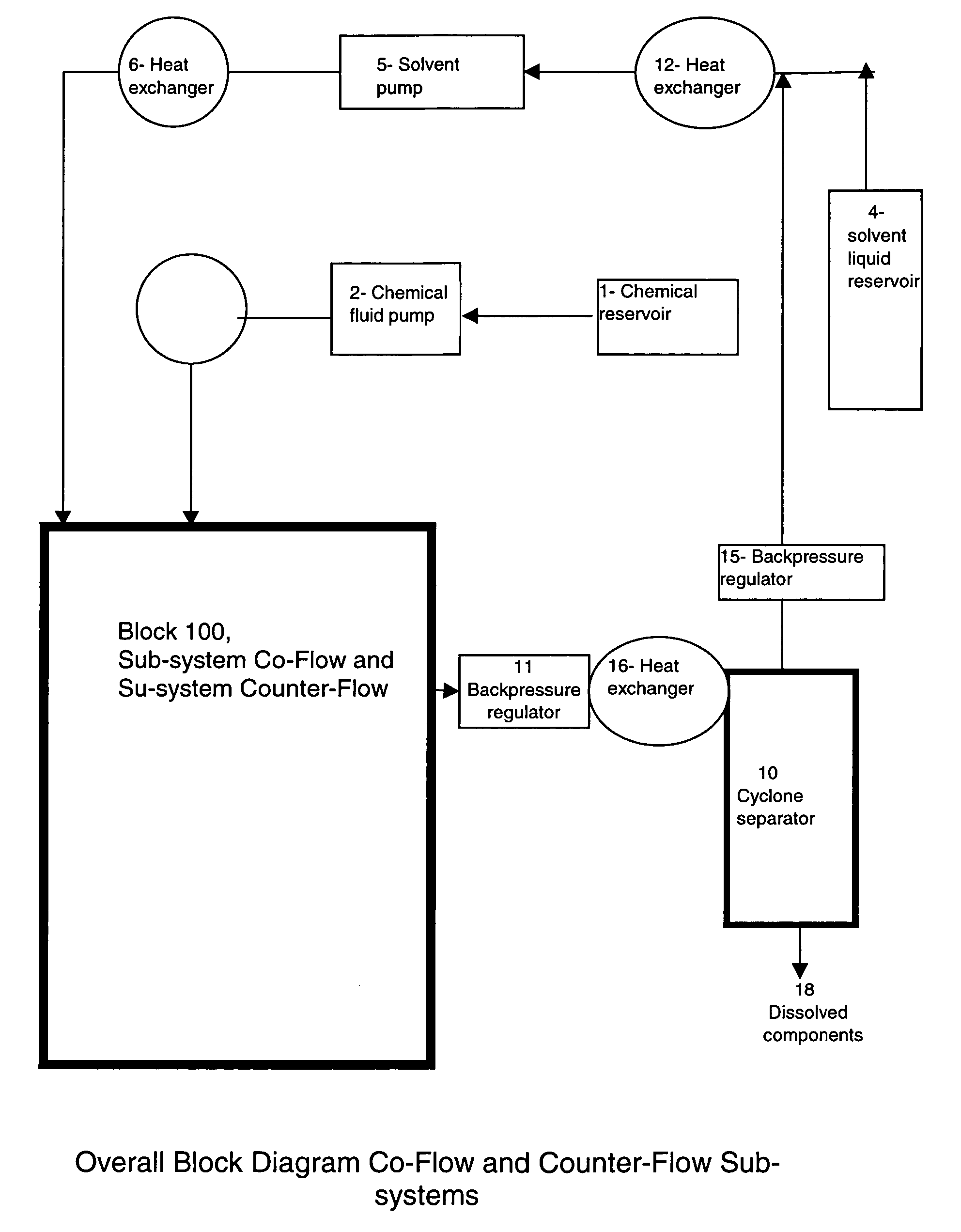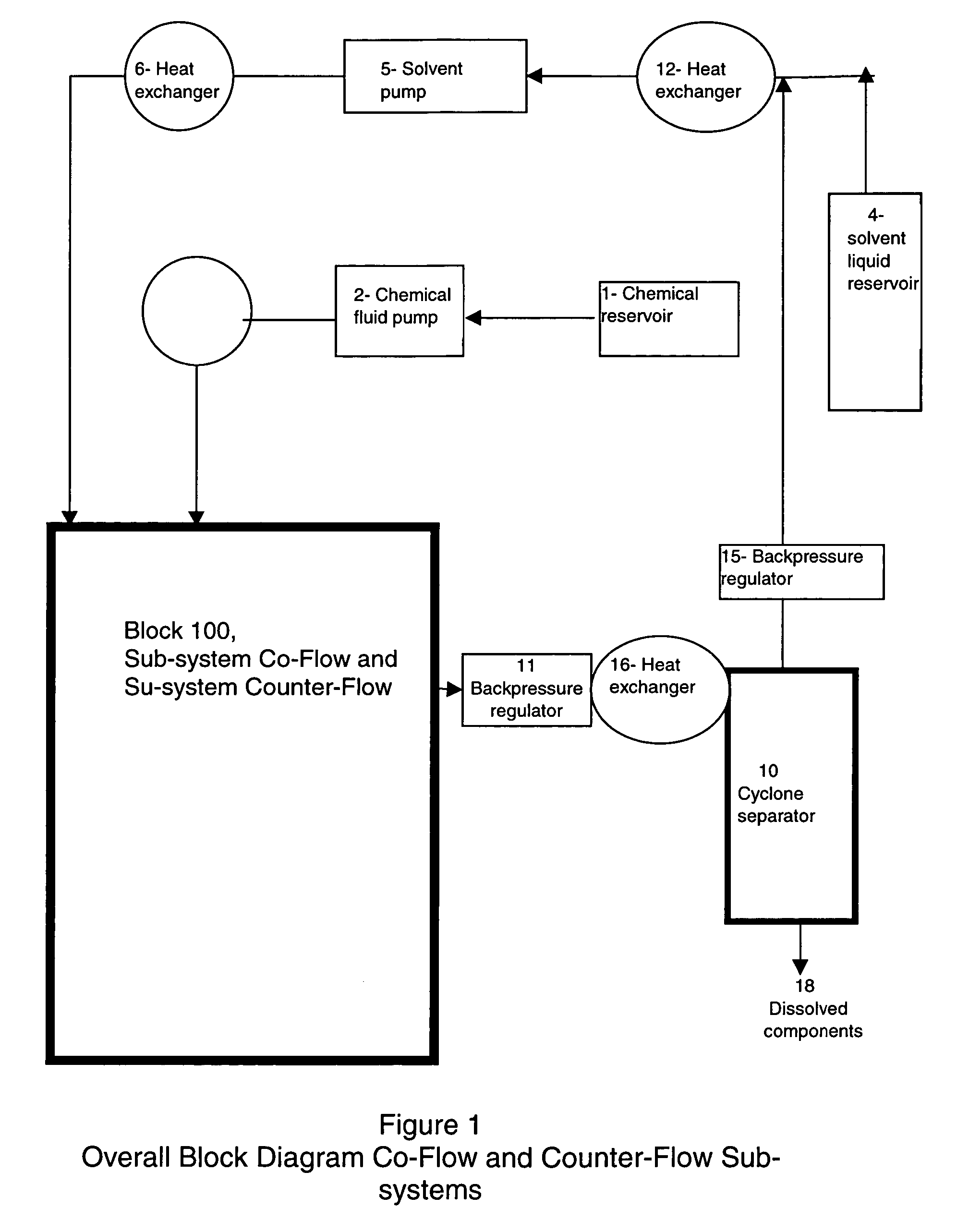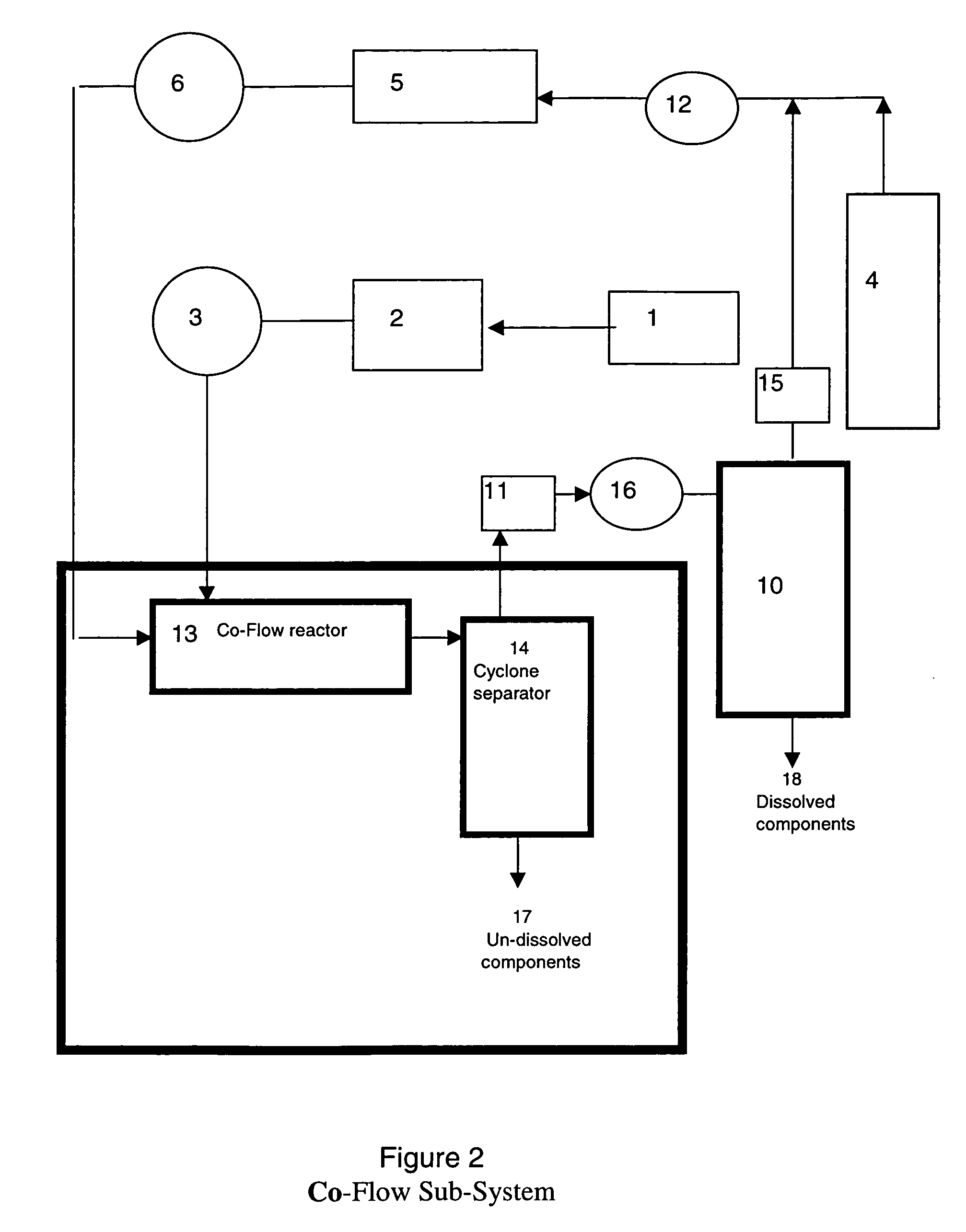Method and apparatus for continuous separation and reaction using supercritical fluid
a supercritical fluid and continuous separation technology, applied in the direction of solid separation, hydrocarbon oil refining, chemical/physical processes, etc., can solve the problems of further remediation, complex process of treating used oils, and high cost and time consumption, so as to reduce or eliminate another cost element, minimize waste components, and minimize the production of rag layers
- Summary
- Abstract
- Description
- Claims
- Application Information
AI Technical Summary
Benefits of technology
Problems solved by technology
Method used
Image
Examples
Embodiment Construction
[0022]FIG. 1 depicts a block diagram of the major elements of a system capable of practicing the method of the present invention. The fluid to be processed is transferred from the chemical reservoir (1) by chemical fluid pump (2) into a heat exchanger (3), then into the sub-system (100). The sub-system (100) may be either co-flow or counter-flow, and the operation of each is discussed in detail below. Supercritical fluid is transferred from solvent liquid reservoir (4) by solvent pump (5) into high-pressure heat exchanger (6) to achieve supercritical conditions of temperature and pressure, then the supercritical fluid enters reactor (100). The high-pressure reactor is maid of metal alloy, which is not compatible with using another form of heating such as microwave. In addition using microwave compatible material such as peek will limit the maximum pressure and reduce the efficiency and the safety of the process. The dissolved components in the supercritical fluid are phased out from...
PUM
| Property | Measurement | Unit |
|---|---|---|
| angle | aaaaa | aaaaa |
| pressure | aaaaa | aaaaa |
| pressure | aaaaa | aaaaa |
Abstract
Description
Claims
Application Information
 Login to view more
Login to view more - R&D Engineer
- R&D Manager
- IP Professional
- Industry Leading Data Capabilities
- Powerful AI technology
- Patent DNA Extraction
Browse by: Latest US Patents, China's latest patents, Technical Efficacy Thesaurus, Application Domain, Technology Topic.
© 2024 PatSnap. All rights reserved.Legal|Privacy policy|Modern Slavery Act Transparency Statement|Sitemap



